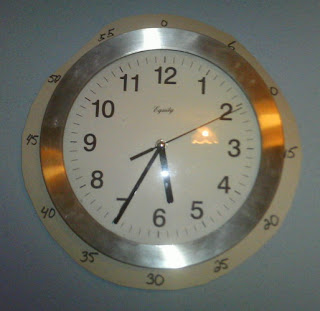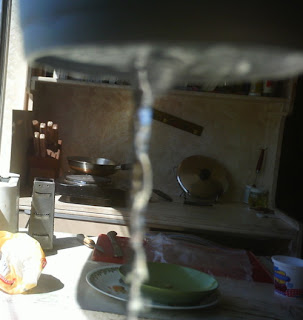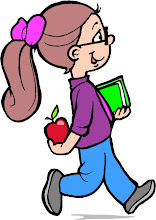- You'll Need: 46 seeds, 6 small zipper close plastic bags, 3 paper towels, scissors, water, nail polish, felt-tip marker
- Label each bag with a number, 1 through 6. Cut the paper towels in half and moisten 3 pieces. Put 6 seeds in each bag. The books suggests radish seeds, we used 3 pinto beans and 3 pumpkin seeds in each bag.
- Do the following with each bag:
- Bag 1: moist paper towel (water), no light (put in drawer), room temperature
- Bag 2: moist paper towel (water), light, room temperature
- Bag 3: dry paper towel (no water), light, room temperature
- Bag 4: no paper towel, water (seeds floating), light room temperature
- Bag 5: moist paper towel (water), no light, freezing temperature (put in freezer)
- Bag 6: moist paper towel (water), no light, room temperature, seeds covered by nail polish (no air)
- On Friday we gathered the bags to see our results.
- The seeds in Bag 1 and Bag 2 had sprouted, so we decided that
- seeds need water, but not too much,
- they don't need light (actually the seedlings in the dark grew more than the ones in the light)
- they need warmer temperatures
- they need air
- You'll Need: a fresh rib of celery, 2 glasses of water, red and blue food coloring, knife
- Color one glass of water red and the other blue.
- Cut any dried up celery off the bottom of the rib.
- Slice the rib up the middle.
- Put one end in the red water and the other in the blue water.
- Keep a watch on the celery to see what happens.
- This is how ours looked after a couple days.
- The celery turns red and blue because plants have special tubes in their stems that suck water and nutrients up to the plant's leaves.
Wednesday we started an experiment to learn about Over Crowding.
- You'll Need: a shoe box, soil, water, 12 bean seeds
- Fill the shoe box with soil.
- In one end plant 6 beans very close together.
- At the other end plant the other 6 beans about 1-1/2-inches apart.
- As they grow, observe which seedlings do better.
Here are the results of the experiment. On the left, crowded, only 2 beans sprouted and the plants and leaves were small. On the right, beans spaced out, 3 beans sprouted and they grew tall and had large leaves.
Thursday we tried to identify the pine tree in front of our house. We think it is a Jeffrey Pine.
Friday -- see Monday
- We picked some flowers around our yard and pressed them.





















